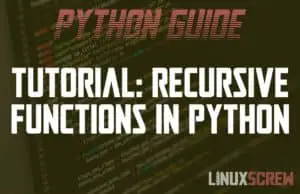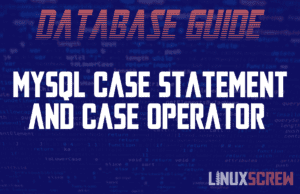Using Recursion/Recursive Functions in Python, with Examples
This article will explain how to use recursion in Python functions, with some example code to illustrate the concept. A recursive function is a function which calls itself one or more times until a condition is met. If a function that uses recursion calls itself too many times, Python will throw an error. As this is a demonstration of a code structure rather than anything with any specific syntax, I’ll show a simple example of a recursive function and leave comments explaining what is going on. Python … Read more






![Converting Bytes To String In Python [Guide] 9 Converting Bytes To String](https://cd.linuxscrew.com/wp-content/uploads/2021/03/Converting-Bytes-To-String-300x194.png)
![Checking Type in Python [Guide] 10 Checking Type in Python](https://cd.linuxscrew.com/wp-content/uploads/2021/03/Checking-Type-in-Python-300x194.png)
![The MySQL LIMIT and OFFSET Clauses [with Examples] 11 MySQL LIMIT and OFFSET Clauses](https://cd.linuxscrew.com/wp-content/uploads/2021/03/MySQL-LIMIT-and-OFFSET-Clauses-300x194.png)

![Showing Errors in PHP [Tutorial] 13 Showing Errors in PHP](https://cd.linuxscrew.com/wp-content/uploads/2021/03/Showing-Errors-in-PHP-300x194.png)